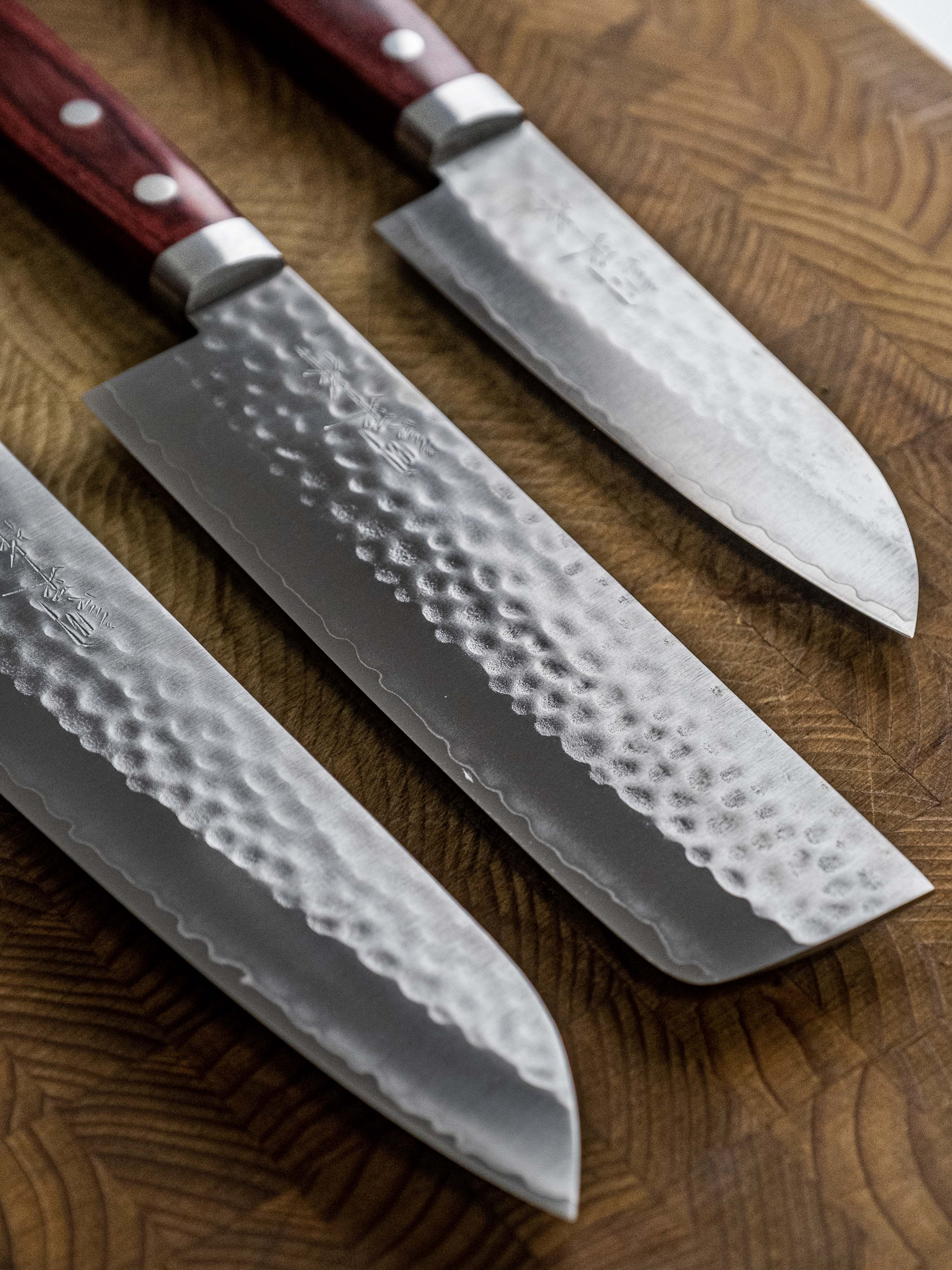Menu
















Moritaka Kurouchi AS Bunka 180 mm
- Price
- $314.95
Taxes and shipping calculated at checkout
Out of stock
Product Information
| Blade Length | 180 mm |
| Total Length | 310 mm |
| Steel Type | Aogami Super (Iron Clad) |
| Handle Material | Walnut |
| Ferrule | Black Pakka Wood |
| HRC (Rockwell) | 63 |
| Spine Thickness | 2 mm |
| Height Spine to Heel | 43 mm |
| Weight | 122 grams |
| Bevel | Double |
Moritaka Hamono
Moritaka Hamono was founded in 1293 during the Kamakura period by Kongohyoe Minamoto no Moritaka, who was the head swordsmith for the Buddhist priests at Mt. Homan in Dazaifu, Fukuoka. His descendants then followed in his footsteps in the same city for 13 generations. In 1632, the family followed the Higo Daimyo Mitsunari Hosokawa (The feudal ruler of the Higo region) and moved to Miyaji-machi, Yatsushiro City in Kumamoto. For another 13 generations in this city, they forged swords for Buddhist armies, the Daimyo's army, and also for the Daimyo himself. Moritaka swords were unique because they were made and used to help attain Buddhahood. Five generations ago, master swordsmith Chuzaemon Moritaka decided to expand and apply their forging techniques to kitchen knives. Since then they’ve been dedicated to producing a large variety of kitchen knives and edged gardening tools for agricultural use and forestry.
Moritaka Hamono knives are known for their rustic aesthetic, having clad their knives in soft iron, with an Aogami Super core steel. The blacksmith finish or kurouchi is distinctly rough, and the warikomi technique, where the core steel is folded into a single piece of soft iron, is a traditional practice, as opposed to sanmai, which uses two separate pieces of soft metal as the cladding. Since Moritaka Hamono employs more traditional knife-making techniques, their production is limited to smaller batches, as they like to honour their inherited methods. Their blades are heat treated to approximately 64 HRC and have a midweight profile, mostly holding their width down towards the edge. Notably at the tang, Moritaka Hamono has developed a unique feature, where despite having an iron clad/carbon core steel knife, the tang area is protected in stainless steel, hence the change in colour – to prevent rust around the handle area, and prevent the tang from rusting inside the handle.
The Knife
The bunka is to the santoku what the kiritsuke is to the gyuto. With a more aggressive tip and flatter profile than most santokus this bunka will excel at chopping and piercing tasks, and also more detailed tip work. The Bunka is an all purpose shape that is very similar to the ever versatile santoku. With its more aggressive K-tip, or reverse tanto tip, these guys can do everything the santoku can, but excel in finer tip work for things like brunoise shallots and garlic.
*Suitable for right and left handed users
- This Knife is made from 3 layers of material; A layer of iron on each side protecting a layer of carbon steel at the core, in a process referred to as Sanmai or forge welding. Iron and carbon steel are both susceptible to rust and must be kept dry and clean at all time’s to avoid oxidation and discolouration.
- Simply wipe the knife with a damp cloth immediately after use.
- Wash with regular dish soap and warm water using a none abrasive sponge or cloth.
- Never put your knife in the dishwasher! The extreme heat will ruin the wooden handle.
- Highly acidic ingredients (Onions, Tomatoes, Citrus) Will cause rust and oxidation to happen faster, thus the user must ensure the knife is wiped clean immediately after working with such an ingredient.
- Should any rust form it can be removed using a rust eraser or a mixture of Baking soda and water to simply scrub it clean.
- Avoid Bones, Frozen foods, nuts and hard candies or anything other than fruits, vegetables and proteins.
Recommended for You
- Choosing a selection results in a full page refresh.
SHOP
IN-STORE CLASSES/SERVICES
STORE POLICIES
CONTACT US
142 JAMES ST. S HAMILTON ON L8P3A2
MONDAY - SATURDAY :
11 AM to 6 PM
SUNDAY : CLOSED
195 NORSEMAN ST UNIT 14 ETOBICOKE ON M8Z0E9
MONDAY - SATURDAY :
11 AM to 6 PM
SUNDAY : CLOSED
Country/region
© 2025, SHARP Knife Shop Powered by Shopify





